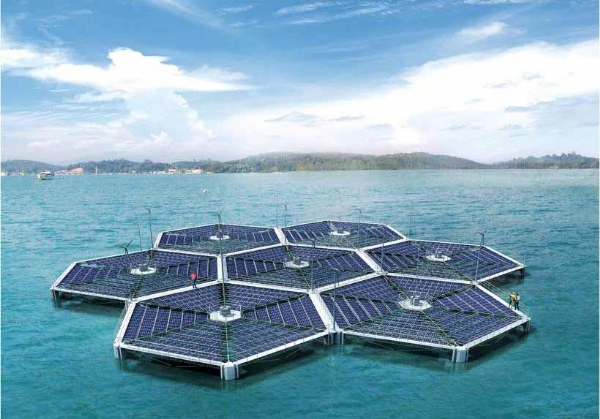India’s largest floating solar power project commissioned
With the operationalisation of the 100-MW Solar PV Project at Ramagundam, the total commercial operation of floating solar capacity in the southern region rose to 217 MW. Earlier, NTPC had declared commercial operation of 92 MW Floating Solar at Kayamkulam (Kerala) and 25 MW Floating Solar at Simhadri (Andhra Pradesh).
Total Views |
NTPC on Friday announced that India’s largest floating solar power project is now fully operational. NTPC declared commercial operation of the final part capacity of 20 MW out of 100 MW Ramagundam Floating Solar PV Project at Ramagundam, Telangana with effect from today.

With the operationalisation of the 100-MW Solar PV Project at Ramagundam, the total commercial operation of floating solar capacity in the southern region rose to 217 MW. Earlier, NTPC had declared commercial operation of 92 MW Floating Solar at Kayamkulam (Kerala) and 25 MW Floating Solar at Simhadri (Andhra Pradesh).
With this, the standalone installed and commercial capacity of NTPC has become 54,769.20 MW, while the group installed and commercial capacity is 69,134.20 MW.
The 100-MW floating solar project at Ramagundam has been fitted with advanced technology and environment-friendly features stated by the Ministry of Power in an official statement.
Constructed with a financial implication of Rs 423 crores through BHEL as EPC (Engineering, Procurement, and Construction) contract, the project spreads over 500 acres of its reservoir. Divided into 40 blocks, each having 2.5 MW, the statement added.
Further, each block consists of one floating platform and a formation of 11,200 solar modules. The floating platform consists of one Inverter, Transformer, and HT breaker. The solar modules have been placed on floaters manufactured with HDPE, High-Density Polyethylene material.
The floating system is being tied down through a special HMPE, a High Modulus Polyethylene rope tied to the dead weights placed in the balancing reservoir bed. The power is being evacuated to the existing switch yard through underground cables.
With the presence of floating solar panels, the evaporation rate from water bodies, in turn, is reduced, thus leaning toward water conservation, the Ministry added.

